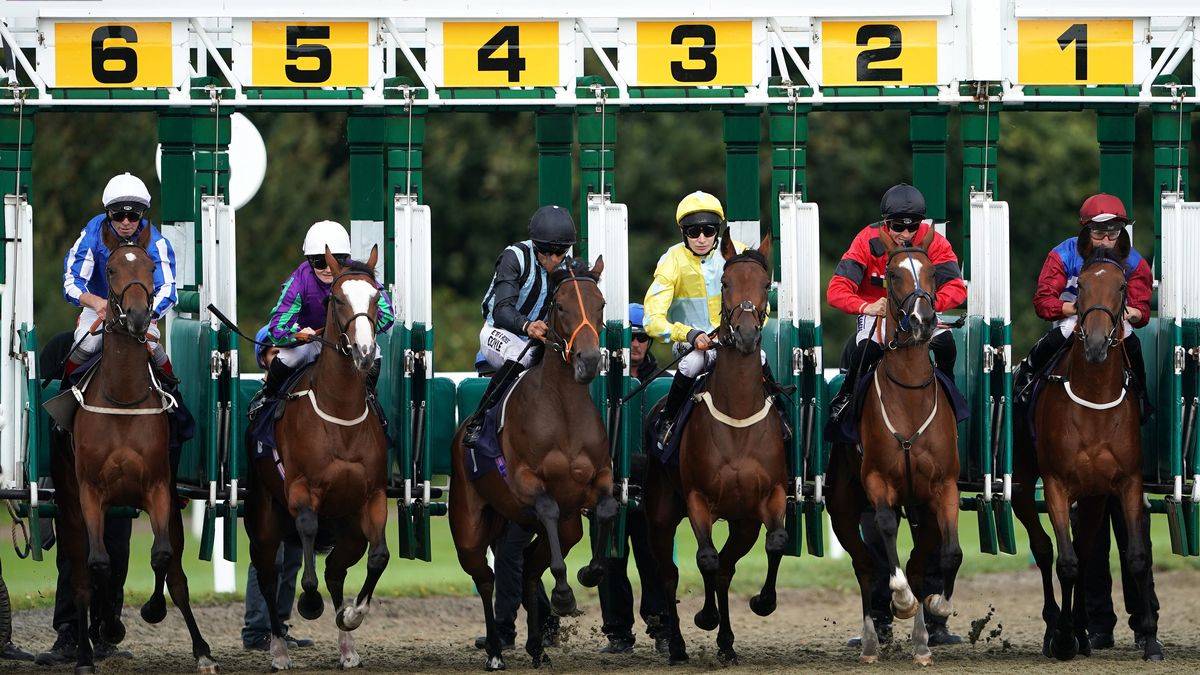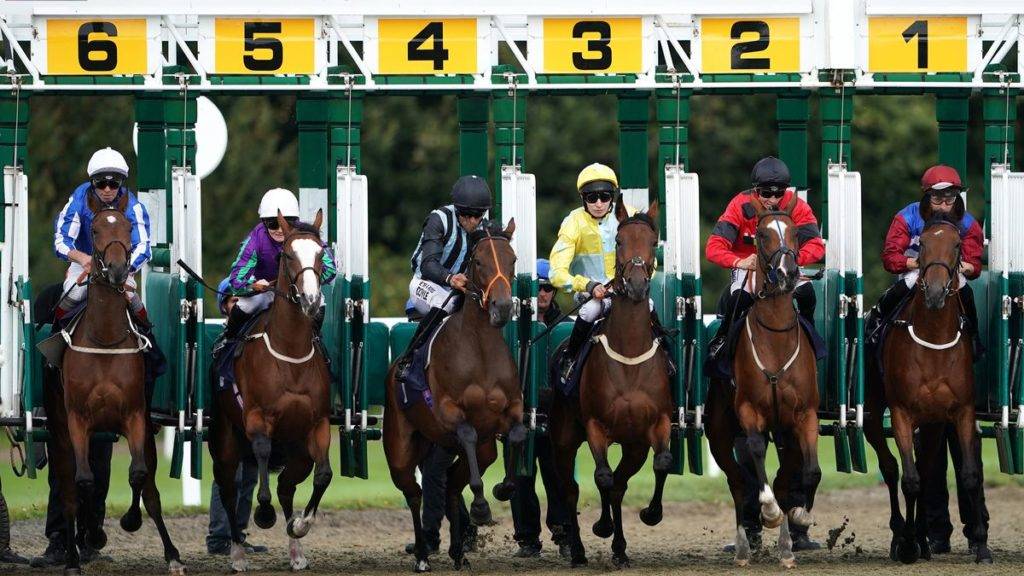
In this article, we aim to demystify the array of acronyms encountered in horse racing. We’ll shed light on their meanings and significance, empowering both newcomers and enthusiasts to confidently navigate race cards, understand race results, and participate in the betting experience with a deeper understanding.

What Does SCR Mean In Horse Racing?
In horse racing, “SCR” stands for “scratch.” When a horse is marked as SCR or scratched, it means that the horse has been withdrawn or removed from a race before it takes place. There can be various reasons for scratching a horse, such as illness, injury, unsuitability for the track conditions, or the owner/trainer’s decision. When a horse is scratched, it will no longer participate in the race, and any bets placed on that horse will be refunded.
What does CSF mean in horse racing?
In horse racing, “CSF” stands for “Computer Straight Forecast.” It refers to a type of bet where punters attempt to predict the first and second-place finishers of a race in the correct order. The CSF is determined by the official order of finish as determined by the race stewards.
The CSF bet is typically offered on races with more than three or four runners and is popular in countries like the United Kingdom. Punters select two horses they believe will finish first and second in the race, and their chosen order matters. The CSF bet requires a higher level of accuracy than a standard place or each-way bet since both the order and the specific horses must be correct to win.
Once the race is completed and the official results are declared, the CSF dividend is calculated. The dividend represents the payout or return for a winning CSF bet, based on the total amount wagered and the odds of the winning combination.
CSF is just one of many acronyms used in horse racing, adding to the intricate language of the sport and providing various betting options for enthusiasts to engage with.
What does CD mean in horse racing?
In the context of horse racing, “CD” stands for “Course and Distance.” When you see CD listed next to a horse’s name in a race program or form guide, it indicates that the horse has previously won a race at the same racecourse and over the same distance as the upcoming race.
The CD notation is significant because it suggests that the horse has demonstrated an ability to handle both the specific track conditions and the distance it will be racing. Winning at a particular course and distance can be an encouraging sign, as it indicates that the horse has previously succeeded under similar circumstances.
For bettors and analysts, noting a horse’s CD record can be valuable when assessing its chances of performing well in a race. A strong CD record implies that the horse has a good understanding of the track and has proven its competence over the distance, which may increase its chances of success.
CD is just one of many indicators and statistics provided in horse racing form guides to assist bettors in making informed decisions and evaluating a horse’s potential performance in a race.
What is an SOC horse race?
In horse racing, “SOC” refers to a race condition known as a “Selling Optional Claiming” race. SOC races are a combination of two types of races: selling races and optional claiming races. Let’s break down these two components:
- Selling Races: In a selling race, the horses running in the race are offered for sale to potential buyers. Each horse in the race is assigned a specific selling price, and if a buyer agrees to pay that price, they become the new owner of the horse after the race concludes. Selling races provide an opportunity for owners to sell their horses, and it often leads to the transfer of ownership.
- Optional Claiming Races: In an optional claiming race, the participating horses are eligible to be claimed by interested buyers at a specified claiming price. Owners have the choice to either enter their horse into the race with a claiming price or keep them ineligible for claiming. Interested buyers can submit a claim for a horse in the race by meeting the specified claiming price. If more than one claim is made for a horse, a random draw determines the successful buyer.
When these two race conditions are combined, you get an SOC race. In an SOC race, the participating horses are available for sale (like in a selling race) and can also be claimed by other owners (like in an optional claiming race). This hybrid race condition provides an opportunity for buyers to purchase a horse directly or claim one during the race, depending on the specific rules and conditions set by the racing authorities.
SOC races can provide an interesting dynamic, as both selling and claiming aspects come into play, adding a layer of excitement and potential ownership changes within a single race.
10 commonly used horse racing acronyms
- G1 – Grade 1: This acronym denotes the highest level of quality in horse racing. G1 races are the most prestigious and offer the highest prize money. They attract the top horses and are often considered championship or classic races.
- FURL – Furlong: A furlong is a unit of measurement in horse racing, equivalent to one-eighth of a mile or 220 yards. It is used to describe the distance of a race, such as 6 furlongs or 1 mile and 2 furlongs.
- DNF – Did Not Finish: DNF is used to indicate that a horse did not complete the race. It typically occurs when a horse pulls up, is declared unfit to continue, or is retired during the race due to injury or other reasons.
- DQ – Disqualification: DQ signifies that a horse, despite crossing the finish line first, has been disqualified by the stewards for an infringement of the rules. It often involves interference with another horse or a violation of racing regulations.
- NR – Non-Runner: NR refers to a horse that was originally scheduled to compete in a race but has been withdrawn before the race takes place. Reasons for non-runners can include injury, illness, unsuitability for the track conditions, or other factors.
- SP – Starting Price: The SP represents the odds or the final price offered on a horse at the start of a race. It is determined based on the betting activity and reflects the estimated probability of that horse winning.
- ROI – Return on Investment: ROI is a measure of profitability in horse racing betting. It calculates the percentage return on the amount wagered, taking into account the total amount won or lost. A positive ROI indicates a profitable betting strategy.
- OTB – Off-Track Betting: OTB refers to a betting establishment or facility where individuals can place wagers on horse races taking place at different tracks. It allows bettors to participate in racing events without being physically present at the track.
- C&D – Course and Distance: Similar to the CD acronym mentioned earlier, C&D indicates that a horse has previously won a race at the same racecourse and over the same distance as the current race.
- BHA – British Horseracing Authority: The BHA is the governing body that oversees and regulates horse racing in Great Britain. It is responsible for ensuring the integrity of the sport, implementing rules and regulations, and managing the licensing of participants, including jockeys, trainers, and owners.
These acronyms are just a small sample of the wide range of abbreviations and terms used in the world of horse racing. Familiarizing oneself with these acronyms can enhance understanding and enjoyment of the sport.
How Much Semen Does A Horse Ejaculate?
How fast are horses in the Grand National?
What Happened To Pug From 12 O Clock?
What does a blinking blue light on a smoke detector mean?
How To Sell Wild Horses Rdr2 Online?
